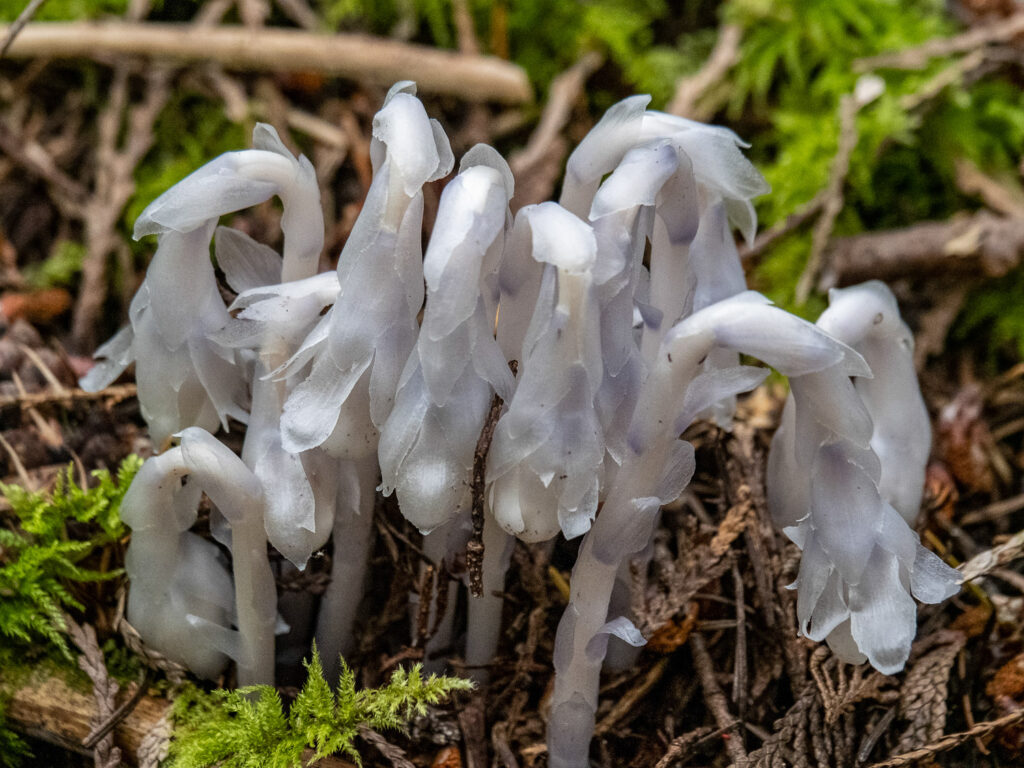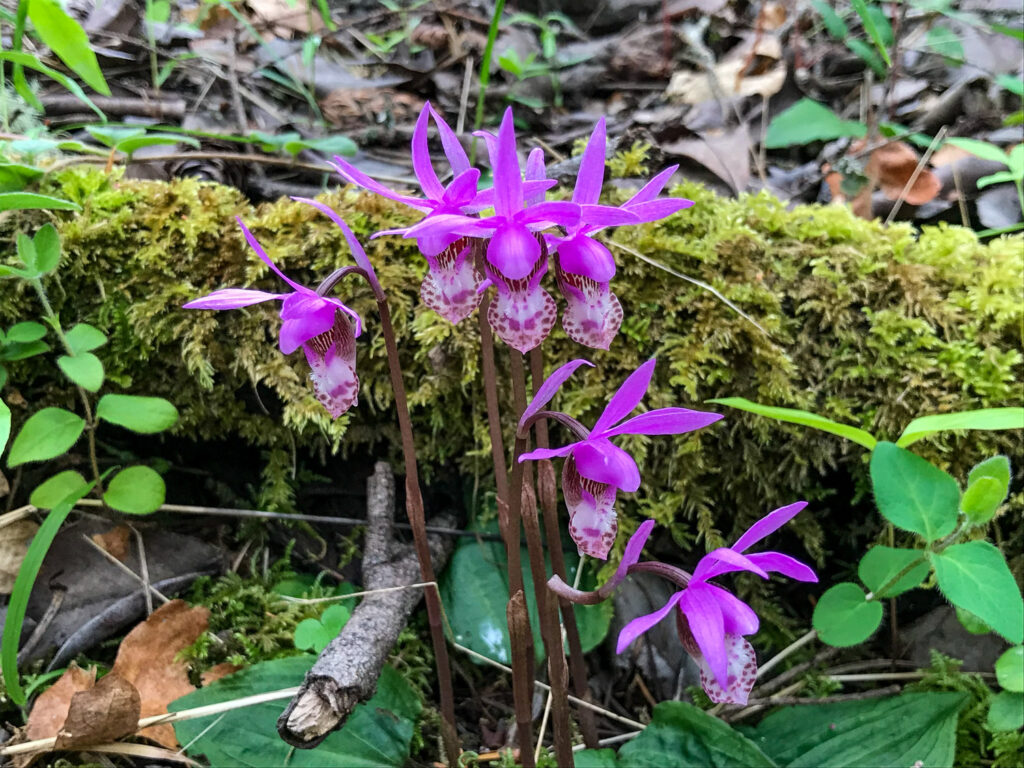Conservation of Biodiversity
Highlights
- Over 400 species of plants and animals rely on BC’s old growth forests for at least part of their life cycle. As of February 18, 2022, 326 species (plants, animals, birds, etc.) have been sighted and recorded in the Fairy Creek watershed, including 17 species that are at risk.
- Few vascular plantA vascular plant has specialized vascular tissue. There are two types of vascular tissue: xylem and phloem, which move water, nutrients, and the products of photosynthesis throughout the plant. Vascular plants include trees, seed plants and ferns. More species are confined to old growth forests, but old forests are optimum habitat for many species including several saprophytic plantsUnlike typical green plants saprophytic plants lack chlorophyll in their leaves and so are unable to produce food from the process of photosynthesis. Instead, they feed on the decay of dead plants and animals. More and lower plant species including mosses, lichens, liverworts, algae, and bacteria, and some probably require such habitat for survival. The rich communities of epiphytesEpiphytes are plants, including lichens, which rely on other plants for support, growing on trunks and branches rather than rooting themselves to the ground. They are not parasitic on the supporting plants but rather derive nutrients from the air and small pools of water that collect on the host. Epiphytes are also referred to as epiphytic plants. More found in old growth canopies include some lichens seldom found elsewhere.
- Clearcuts often support more plant species than old forests but many species in clearcuts are common, invasive, shade-intolerant herbs. Old growth forests may support species that are uncommon or absent in regenerating and immature forests.
Number of species in old forests
Plant species unique to old growth
There are substantial differences in composition and relative abundance of plant species between young and old growth forests. Young regenerating stands (3-9 years old) sampled in a chronosequence studyA chronosequence study in forest sciences is a study that takes place on a set of forested sites that share similar attributes (e.g., climate and topography) but are of different ages More in the CWHvmCWHvm is the abbreviation for the very wet maritime Coastal Western Hemlock biogeoclimatic subzone. The province of British Columbia is divided into 16 zones, including the Coastal Western Hemlock (CWH). A zone is a large geographic area with a relatively uniform regional climate. The CWH zone is subdivided into climatically distinct subzones, including the vm, or very wet maritime subzone. The CWHvm has a wet, humid, mild, oceanic climate and has an extensive distribution on the BC coast including western Vancouver Island. More subzone on western Vancouver Island supported far more plant species (152) than later stages (about 80 species for old growth) (Ryan et al., 2009Ryan, M.W., Fraser, D.F., Marshall, V.G., He, F. 2009. Successional changes in plant species diversity in forest chonosequences on southern Vancouver Island. Natural Resources Canada, Canadian Forest Service, Pacific Forestry Centre, Victoria, BC. Information Report BC-X-421. 13 p. More). They found 63, 17, 4 and 9 plant species unique to 3–9-year-old, immature, mature, and old growth stands, respectively. Much of the decline in total and unique species with stand age arose from the high number of common, invasive, shade-intolerant herbs that colonized regenerating clearcuts but cannot exist under a canopy. In contrast to the herb-dominated clearcuts, bryophytesBryophytes are non-vascular seedless land plants (mosses, liverworts, and hornworts). Although they exhibit specialized structures for water transportation, they have no vascular tissue or true roots. More and lichens made up about half of the species in the older forests, and most occurred on coarse woody debris and rock substrates. The plants unique to old growth were all cryptogamsCryptogams are plants that have no true flowers or seeds and reproduce by spores. They include mosses, liverworts, and lichens. Ferns are considered advanced cryptogams because they reproduce by spores but are differentiated into roots, stems and leaves. Read more about cryptograms. More, namely, the liverworts Bazzania tricrenata, Herbertus aduncus, Kurzia sylvatica, Odontoschisma denudatum, Porella cordeaena, and Radula bolanderi, and the mosses Buxbaumia piperi, Hypnum dieckii, and Plagiothecium laetum.


